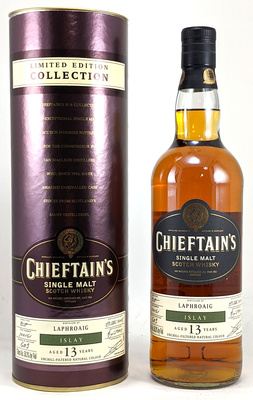|
|
Release Notes
The magical distillery on the south shore of Islay, like all south shore distillers, is quite unlike any other. But Laphroaig has a certain place in the hearts of the hardest core peat lovers. They're the last distiller down there to malt a portion of their barley on site. Their complex system of tiny stills create the most peculiar and enticing peated spirit in the world. The quality and consistency of their casks is second to none. But over the last decade, what was once a staple in the independent bottling repertoire has completely disappeared. Laphroaig is simply not selling casks any longer. And when we do find casks they're usually in very inactive hogsheads and declassified to their trade name, "Williamson." Now that's not a huge problem because Laphroaig always tastes good, but bottlers can't replace even those few casks the prices have gone absolutely bonkers. Signatory recently bottled a sister cask those we sold here just three years ago for $200, Laphroaig from the Fall of 1997, for $700. And by god those bottles sell. But a beautiful butt for a not completely abhorrent price, we jumped all over it. Thank the Lord of the Isles that we did, as it's a complete and utter masterpiece. Some purists askew the idea of Laphroaig in active sherry, but much of the experience is limited to low proof distillery bottlings and finishes. It's truly a stupendous find and going to be one of those casks that people remember for years to come. Collectors and drinkers alike take note.
K&L
The Brand: Chieftain"s
| Silent since: False |
| Address: |
| → website |
Chieftain"s is bottled at natural colour and unchill-filtered to preserve all the natural esthers of the whisky for fuller flavour and smoother taste.
Each Chieftain"s bottling has its own personality and may vary in strength, colour and style. From the very pale, bourbon cask matured to the very amber sherry cask matured
The new, elegant antique bottle is reminiscent of a 1900 whisky bottle. It is decorated with a new style label design complete with new branding, calligraphy and watermark illustrations of Scotland, representative of the 5 different whisky producing regions. Each region is colour coded to signify the differences in the style of each whisky
The new more individual rigid presentation gift box, surrounding the antique bottle, in ribbed and matt black with gold lining, is a true reflection of the quality of the whisky, and with its folding back head beautifully presents the product. On the rear of the box you will find a label describing the various styles of whiskies you can get from the different regions of Scotland, all of which are represented in the Chieftain"s range
The new look Limited Edition Chieftain"s will appeal to the specialist, connoisseur, collector, enthusiast and those seeking an exceptional premium malt whisky gift. Each bottle is signed by our Chieftain"s Rare Malt Manager, and provides details of the wood type, cask number, number of bottles, vintage year, age and bottling date
The small batch releases of Chieftain"s are selected for the Spring and Autumn collections each year with a variety of distilleries, vintages, wood maturations and strengths being made available
Since 1936, Ian Macleod Distillers, through its dedication to tradition and quality, has amassed an unrivalled cask stock from Scotland"s many distilleries. This enviable collection includes extremely rare malts, some from closed or mothballed distilleries. The Chieftain"s collection hallmark is that each bottling must be fit for a King, a Leader or in the Celtic world, a Chieftain
When finishing the whisky in a variety of wood, each cask is checked and selected by our expert noses and released only when we believe it has reached its peak and has not masked the personality of the original spirit
from IanMacleod.com
The Bottler: Ian Macleod Distillers
| Established: 1936 |
| Silent since: False |
| Address: Russell House, Dunnet Way, Broxburn, Scotland EH52 5BU, UK |
| → website |
As well as the above brands which were acquired, Ian Macleod Distillers has developed a number of other brands including: Chieftain"s, Dun Bheagan, Smokehead, The Six Isles, Macleod"s Regional Malts and Magilligan.
Ian Macleod & Co changed its name to its current name, Ian Macleod Distillers Ltd following the acquisition of Glengoyne Distillery and the Langs brands in April of 2003.
Ian Macleod Distillers acquired Isle of Skye blended scotch whisky in 1963, King Robert range of spirits in 1968, London Hill Gin in 1990, Wincarnis Tonic Wine and Hedges & Butler scotch whiskies in 1998, Watson"s Demerara and Watson"s Trawler rums in 2000 and finally Glengoyne Distillery and the Langs brands in 2003.
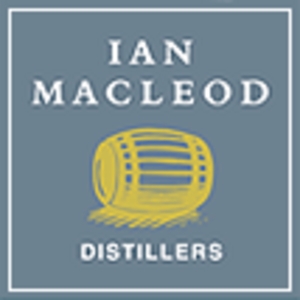
Ian Macleod & Company Ltd was established in October 1933. Leonard Russell Snr owned his own whisky broking company in 1936. He died in 1956. Ian Macleod & Co was acquired by the Russell family in March of 1963. Peter Russell was Managing Director.
David Russell, Peter"s younger brother joined the company in 1963 and became a Director, retiring in 2000. He Acquired the company and label called William Maxwell. Leonard Russell, Peter"s son, joined the company in 1989 as Business Development Manager, and was appointed Marketing Director in January 1993.
The company Ian MacLeod was founded in 1936 by Leonard J. Russel. Their output exceeds ten million bottles of whiskies each year, which makes them one of the bigger players in the field. Their brands include Chieftain"s (in the past it was marketed under the full name "Chieftain"s Choice), the Shieldaig Collection, Hedges & Butler, MacLeod"s, Dun Bheagan, As We Get It, Dunfife, Glenshire, King Robert II, Smokehead, Isle of Skye and Langs. Apart from a sizeable collection of casks (Ian MacLeod supposedly owns more than 20,000 casks of maturing whisky from many different distilleries) Ian MacLeod obtained their own distillery a few years ago; Glengoyne. Since they acquired Glengoyne in 2003, the quality of the distillery"s output has improved significantly. However, it remains to be seen whether or not they released most of their best whiskies in the first few years to establish their brand, just like Douglas Laing and Bruichladdich have done when they initially emerged on the malt market. Ian MacLeod also owns a large bottling plant at Broxburn where they bottle other spirits like gin, vodka and rum.
from Malt Madness, IanMacleod.com
The Distillery: Laphroaig
| Established: 1815 |
| Silent since: False |
| Address: Port Ellen, Isle of Islay, Argyll, PA42 7DU, UK |
| → website |
In the new Millenium
The Laphroaig distillery is arguably the most famous distillery on Islay. The island itself is famous for its pungent, peaty malts, so I guess that sort of makes the Laphroaig single malt the most famous peaty whisky. Laphroaig wasn"t my first peated malt whisky experience, but if I"m not mistaken it was the first other " peat monster" I tried after my discovery of the Lagavulin 16yo in 1991 - and I liked it a lot!
As far as I know the book is the first of its kind; a detailed history of a specific Scotch whisky distillery that was NOT written by their PR people. Well, those can have their own quirky charm as well I suppose; I still cherish the autographed copy of "The Definitive Guide To Buying Vintage Macallan" that Indian maniac Krishna gave me. I admire the boldness of charging £10,- for what"s basically a brochure for expensive bottlings (keeps the riff-raff from reading it, I suppose), but some of the proudly featured "antiques" later turned out to be fakes. A talented faker had convinced the PR people of Macallan to buy these bottles for their own archives...
But I"m getting side-tracked... The topic was Laphroaig distillery. I visited the distillery with some other maniacs during "Feis Ile 2005". The Islay Festival is great way to know the distilleries, the island and its inhabitants - which included quite a few swans and seals when we were there in May 2005. Every distillery on the island releases one or more " festival bottlings" each year, and those from Laphroaig are usually excellent - and relatively affordable too...
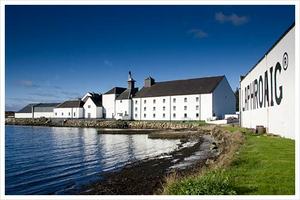
Ian Hunter had no descendants, so he left the distillery to his secretary, Elisabeth ("Bessie") Williamson. Bessie was the first female distillery manager on Islay (and quite probably in all Scotland); she managed Laphroaig until her retirement in 1972.
These were just a few small tidbits of information from the rich and diverse history of the Laphroaig distillery. Dutch writers Marcel van Gils and Hans Offringa have published a great book about it; The Legend of Laphroaig. The massive book (ISBN 9789089100276, published in 2007) is a must-have for all true Laphroaig fanatics. If you"re interested, you can order it via the official Laphroaig website (see above) or through Marcel van Gils" on-line shrine that"s at www.laphroaigcollector.com. The book is beautifully illustrated!
Laphroaig was "officially" founded in 1815 but rumour has it that the brothers Alexander and Donald Johnston actually built it around 1810 when they started farming in the area. The first official registration of the distillery wasn"t until 1826. The distillery remained in the Johnston family until 1954 when Ian Hunter left it to one Bessie Williamson.
I"ll get back to Bessie in a moment - there"s another little nugget of history I"d like to share with you first. The Johnston family provides a link between Laphroaig and another distillery on Islay: Tallant. It is long gone now (according to my copy of the "Moss & Hume" bible it was closed in 1852), but it was owned by another branch of the Johnston family tree. In those days, people still married their nephews and nieces (if they liked them enough), so after a marriage Laphroaig and Tallant were owned by the same family for a while. Unlike the name suggests, Ian William Hunter was a member of the Johnston family as well. He started working at Laphroaig in 1908 and remained there until his death in 1954.
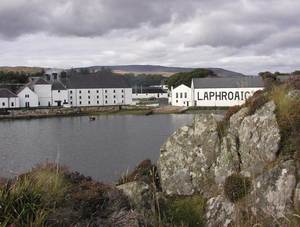
And that"s the "general information" on the Laphroaig distillery so far... There"s a lot more to tell about Laphroaig, but the available space on this page is limited. So, I kindly refer you to the book "The Legend of Laphroaig" (by Marcel van Gils & Hans Offringa) for much more information about the history of the Laphroaig distillery. The "trivia" below are just a few tips of the iceberg - and the very top part of the tips at that...
As far as the bottlings are concerned; you can find my tasting notes on a few recent expressions at the bottom of this page. Generally speaking, I like recent official bottlings slightly less than I used to, simply because the value has decreased a little. At the end of the 1990"s many young "antiques" that had been bottled before, say, 1980 were more expensive than their siplings that were distilled in that year and bottled in their twenties. It"s safe to say that this situation has now changed...
2002 - Ian Henderson (who started his career at Laphroaig in 1989) retires as distillery manager.
2004 - The first edition of the Laphroaig "Quarter Cask" is launched. The whisky has no age statement, but it"s supposedly a vatting of "quarter casks" that have matured for circa five years. The contents of these casks is a little over 100 litres, so the wood-to-whisky ratio is much higher than in regular casks. This affects maturation.
2005 - The Laphroaig distillery is acquired by Fortune Brands, a subsidiary of Beam Global Spirits & Wine.
Trivia:
- Most distilleries have an even number of stills; x sets of a wash still and a spirit still. However, Laphroaig has an uneven number of stills - seven to be exact. In 1968 the number of stills was expanded from four to six and when Bessie Williamson retired in 1972 a seventh still was added - an extra spirit still.
- Laphroaig stands on the "grave" of another distillery in the Kildalton area of Islay. Unlike the aforementioned Tallant distillery, the Ardenistle distillery (a.k.a. Ardenestiel or Aredenistiel) was located right next to Laphroaig. It was founded in 1837 by Andrew & James Stein - but it was discontinued again just a decade later, around 1848. The remains are now part of the Laphroaig distillery.
- Laphroaig has been the only whisky to carry the Royal Warrant of the Prince of Wales (the 15-year-old is reportedly his favourite scotch whisky), which was awarded in person during a visit to the distillery in 1994.
from Malt Maniacs
The Owner: Fortune Brands
| Established: 1890 |
| Silent since: False |
| Address: Fortune Brands, Inc., 520 Lake Cook Road, Deerfield, IL 60015 |
| → website |
By the late 1990s, Fortune was rather different from what it had been ten years earlier. After getting rid of its tobacco holdings, Fortune began buying up companies in the home and office products area, such as Schrock Cabinet Co. and Apollo Presentation Products, a maker of overhead projectors. It also bought in the liquor segment, picking up Geyser Peak Winery in 1998 and entering an agreement in 1999 with two European liquor companies to jointly distribute their spirits worldwide. Fortune also vowed to better manage the brands in its portfolio, and in 1999 took a charge of $1.2 billion to restructure and write down goodwill. The company also announced it would cut costs by reducing its corporate staff by one-third and moving its headquarters to Lincolnshire, Illinois, where its office products division already was located.
From the complex dissolution of American Tobacco, designed and overseen by James Duke himself, came the elements of the modern tobacco industry. Spun off as new corporate entities were Liggett & Meyers, Lorillard, R.J. Reynolds, and a new, smaller American Tobacco Company. With the exception of Reynolds, these companies were given assets in all phases of the tobacco business, and Reynolds, the youngest and most aggressive of the companies, soon acquired what it lacked. Control of British-American Tobacco was lost to the British, where it has remained. Duke turned over direction of American Tobacco to Percival S. Hill, one of his veteran lieutenants, and himself went with British-American as chairman and one of its directors. The founder retained large holdings of stock in each of the newly formed spin-offs and, upon his death, left a great deal of money to the eponymous Duke University and a score of other charitable causes.
The immediate postwar years were good for American Tobacco, which upped its overall share of the domestic tobacco market to 32.6 percent in 1953. However, that would prove to be the high-water mark for the company"s cigarette business. In the long run, however, American Tobacco"s relative failure in cigarettes may have been a blessing. Beginning in the mid-1960s, the company used the steady cash flow from its remaining tobacco business to make a number of promising acquisitions. Chief among these were Gallagher Ltd., one of the United Kingdom"s largest tobacco companies; James B. Beam Distilling Company; Sunshine Biscuits; Duffy-Mott; and several makers of office products. In recognition of the company"s changing profile, it was renamed American Brands in 1969, by which date its share of the domestic tobacco market had slipped to 20 percent and continued to decline. After a handful of other minor acquisitions, American Brands made its largest purchase in 1979, buying The Franklin Life Insurance Company, the tenth largest life insurer in the United States. By that time, non-tobacco assets were generating one-third of American Brands" operating income of $364 million, and the company"s diversification program generally was regarded as a modest success.
Duke"s control of United Cigar Stores" more than 500 outlets gave the public a clearer picture of the extent of Duke"s domain, and his company soon faced rising criticism and opposition, some of it violent. Those in both the industry and the public had reason to dislike Duke and his cartel; Kentucky tobacco growers, for example, their prices repeatedly lowered by the single large buyer in town, banded together in 1906 to burn down a number of the trust"s large tobacco warehouses. More serious was the increasing pressure brought to bear by the U.S. Department of Justice, which took heart under the administration of President Theodore Roosevelt and began a series of antitrust actions against the industrial combines. In 1907, the department filed suit against Duke"s creation, now once again called American Tobacco Company, and in 1911 the Supreme Court agreed that the trust must be dissolved to restore competition to the tobacco industry. Total corporate assets were estimated at more than $500 million.
Fortune Brands traces its origin to the remarkable career of James Buchanan (Buck) Duke, founder of The American Tobacco Company. Duke was born in 1856 on a small farm outside Durham, North Carolina, where his father, Washington Duke, raised crops and livestock. The Duke farm was ravaged by armies of both North and South at the end of the Civil War, and upon his release from a military prison Washington Duke found that his sole remaining asset was a small barn full of bright leaf tobacco. Bright leaf, so called because of its golden color, had been introduced only recently, but its smooth smoking characteristics were already making it a favorite, and its fame was soon spread by the returning war veterans. Duke set out to peddle what leaf he had, and, pleased with the response, he quickly converted his land to tobacco culture, selling his wares under the name Pro Bono Publico, meaning "for the public good" in Latin. In its first year of operation, W. Duke & Sons sold 15,000 pounds of tobacco and netted a very handsome $5,000.
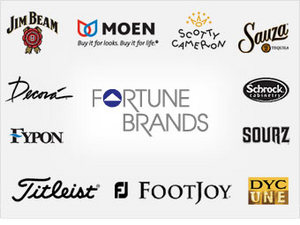
Duke had grown to dominance of the cigarette business in a single decade and, shortly, was to duplicate the feat worldwide. Though triumphant, Duke was faced with the prospect of continuing bitter competition and restricted profits. The 32-year-old veteran thereupon proposed a solution that was startling in scope: to merge all five of the competitors and, by joining forces, bring to an end the wasteful price warfare. His fellow manufacturers at first balked at the initiative, but they eventually agreed and in January 1890 formed The American Tobacco Company, its $25 million in capital divided among ten incorporators, with J.B. Duke named president. The new company, one of the first true combinations in the history of U.S. business, controlled 80 percent of the nation"s cigarette business and showed a net profit of $3 million in its first year.
Fortune Brands, Inc., is a widely diversified conglomerate with principal businesses in distilled spirits, home products, hardware, office supplies, and golf equipment. Most of its brands are either number one or number two in their market categories. Fortune"s brands include Jim Beam, the world"s best-selling bourbon, Swingline staplers, Acco paper clips, Master Lock padlocks, Moen faucets, and Titleist and Pinnacle golf balls. Fortune was a major player in the tobacco industry until the late 1990s, when it sold its domestic and foreign tobacco interests and got out of that business entirely. Nearly 20 of the company"s brands generate more than $100 million in sales.
In 1991, American Brands strengthened its hold on the distilled spirits market by acquiring seven brands from the Seagram Company. American spent $372.5 million for the brands, which represented approximately one-quarter of giant Seagram"s sales in the United States. In the midst of a turndown in liquor consumption, Seagram had decided that those who were drinking less should drink better. Thus, it wanted to unload some of its less prestigious brands. American, however, was deliberately pursuing the opposite tack, aiming for more budget-conscious consumers. The brands it took over from Seagram were the American whiskies Calvert Extra and Kessler, Canadian whisky Lord Calvert, Calvert gin, Ronrico rum, Wolfschmidt vodka, and Leroux liquor. The acquisition made American"s subsidiary Jim Beam Brand Company the third largest spirits company in the United States. American"s strategy seemed profitable. Though its new liquor brands and its tobacco brands lacked both snob appeal and great market share, they did make money. Profits rose to record levels in 1991, with a rise of almost 40 percent for the year. Liquor sales, bucked by the Seagram acquisition, rose 12 percent, and tobacco sales rose all of 1 percent. This small rise, however, was the first increase for American since 1965.
The company then changed its name in 1996, from American Brands to Fortune Brands. This came after the company sold the last vestige of its tobacco business, its British unit, Gallagher. The company was concerned that investors still associated its old name with a tobacco company. For example, when a smoker in Florida won a substantial jury award against another tobacco company in August 1995, American"s stock suffered. The newly named company"s CEO, Thomas Hays, explained the rationale behind the choice, saying, "People talk a lot about something being fortunate or making a fortune, which is certainly what we want to do for our shareholders" (from a December 9, 1996 interview in Fortune magazine).
from FundingUniverse.com
